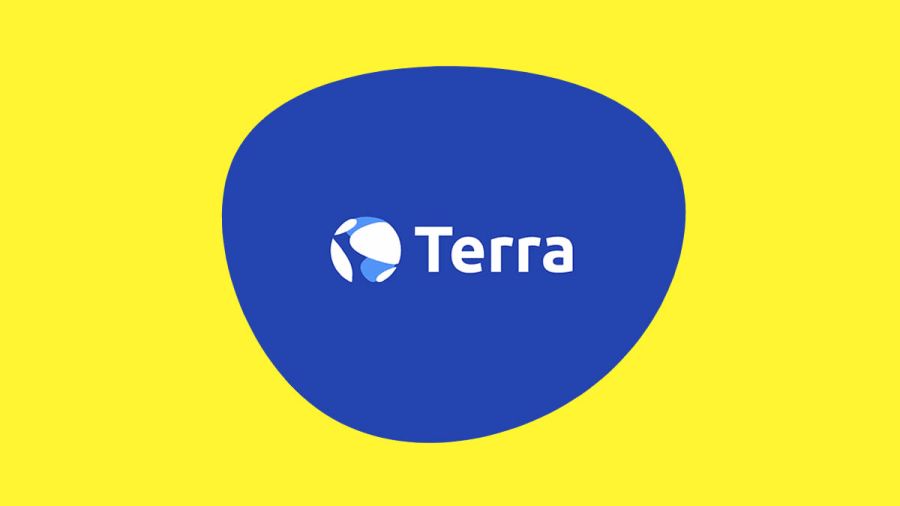Why Terra grew to number two in DeFi
CryptoPress
Terra, the blockchain network and token that are unstoppable. Its $LUNA token continues to grow, and its network is already behind Ethereum.
Its blockchain surpassed Binance Smart Chain in locked funds, while its cryptocurrency consolidates itself in the “Top Ten” of the most valuable cryptocurrencies.
Terra is a blockchain that is based on Cosmos software. It was created by the South Korean company Terra Labs. Their project aims to decentralize finance by creating applications that can easily generate cryptocurrencies or stablecoins.
Terra’s money market, which is made up of a wide range of decentralized financial vehicles, such as credit and savings facilities, has seen significant growth since last year. This has allowed it to outperform other networks like BSC, which have also grown in recent months as a result of the popularity of DeFi.
According to Defillama Terra (Luna) is currently second in market capitalization behind Ethereum, with more than 21,000 million dollars of value locked. It has surpassed and is currently almost double the third party, BSC (Binance Smart Chain, now called BNB Chain), with 11.6 billion.
Terra currently has 21 different Defi protocols, with Anchor and Lido being the main ones, with $11.7 billion and $7.21 billion of value locked respectively.
For what reasons did Terra become the second DeFi platform?
1. High DeFi returns
Terra has several high-value protocols for the world of decentralized finance (DeFi), with very high returns.
Anchor: currently, if you deposit and borrow your UST tokens, you will have 19.5% APY. Compared to other decentralized protocols like AAVE or CURVE where deposit and loan fees for some tokens are around 3% APY.
Lido: allows investors to earn staking rewards on their tokens, while also allowing them to put the resulting LP tokens to work in a variety of decentralized finance (DeFi) protocols.
Astroport: one of the latest projects to launch, it is already 3rd within the Terra ecosystem with more than 1,000 million of value locked, it grants returns from 12% APR, to more than 120% APR with some combined yield LP tokens.
Stader: this Terra platform maximizes staking returns through a smart compounding protocol that gives 9% APY by staking Luna tokens.
2. High value protocols
Terra’s 21 highly valuable protocols can be used by anyone without any requirements, generating a huge amount of liquidity as they are available to anyone in the world without any requirements and in a secure manner. This is what we refer to as true decentralization, as Terra’s protocols give people the ability to maintain complete control over their assets while ensuring they are managed securely and effectively.
Anchor’s API allows customers to quickly integrate their platform with any other platform that displays people’s money balances. In addition, it works as a loan platform without minimum deposit amounts or granting criteria. It is accessible to anyone without distinction.
Lido is a service that allows users to inject money into assets without the need to lock them up. At the moment, it is the only Terra dApp of its kind that works as a multi-chain application, working with both Ethereum and Solana. Users who deposit $LUNA with Lido receive an annual percentage rate (APR) of 8 percent. One of the keys to the popularity of the platform is the fact that you can continue to stake your tokens on all Terra platforms, compounding the performance, which is the main reason for its success.
3. $LUNA price hike
People have been putting their crypto into DeFi for high returns, but the main thing that has kept the network going in recent months has not been so much the new value locked, but the skyrocketing price of $LUNA.
CoinGecko says that LUNA is up nearly 57% in recent weeks. At the same time, the native token of Terra’s largest DeFi project, Anchor Protocol ($ANC), is also up over 70%.
Lots of price changes are giving the Terra ecosystem an extra boost. The reasons for the increase in popularity are many. The $LUNA token is being added to more and more exchanges, such as Kucoin, Binance, and FTX Exchange, where it was recently added.
More importantly, however, the protocol set aside $1 billion for a Bitcoin treasury, which came from a LUNA token sale. It is said that the money will go towards establishing what is called a “Forex UST Reserve”.
The non-profit organization Luna Foundation Guard (LFG) will be able to provide the stablecoin with an uncorrelated reserve in case the price of the stablecoin goes up or down. This will help keep the UST at $1.
UST and LUNA were made in a way that makes this reservation important. It is important that these reserves are not correlated with each other. Every time $1 UST is earned, destroyed, or burned, $1 LUNA is destroyed or burned. And also the other way around: every time LUNA is created, UST is destroyed.
This makes for a good arbitrage opportunity. If the price of UST drops below $1, people can still buy that UST and then exchange it for $1 worth of LUNA and get their money back. It is also burned when this UST is bought and then traded. It is out of use. This reduces the supply of stablecoin, helping it to rise back up to $1 in the market again.
As more LUNA is used to make UST, the amount of LUNA in circulation decreases, giving the token a similar increase in value.
As you can see, there is a very close algorithmic relationship between these two assets. A different asset, such as Bitcoin, is now being added to the equation in case the old mechanism fails to maintain parity for some reason.
As the market value of UST grows, the $1 billion figure is significant for a protocol with over a $14 billion capitalization.
© 2024 Cryptopress. For informational purposes only, not offered as advice of any kind.
Latest Content
- “Renzo’s Restaked ETH Depegs to $700: DeFi Platforms Gearbox and Morpho Face Liquidations”
- Crypto Market Update: Insights and Trends for April 23, 2024
- On April 24, the $RTF Token from Oleksandr Usyk’s READY TO FIGHT Project Will be Listed on WhiteBIT
- Crypto Market Update: Key Trends and Insights for April 22, 2024
- NAGA’s Shareholders Approve the Merger With CAPEX.com With a Positive Vote of 99.81%
Related
- Non-Fungible Tokens: The Guide Non-fungible tokens (NFTs) are a new type of token which is represented by unique cryptographic units, meaning that each token has a unique value. ...
- Wonderland DAO – The Saga of Defi 2.0 The Wonderland saga continues in what seems to be the most interesting and relevant story in the Defi world....
- Terra (LUNA) Is Undervalued, Could Easily Double And Be Top Ten EOY Says PrimeXBT Analyst Kim Chua LUNA, the native token of the Terra blockchain, has been gaining traction with great speed. ...
- What to do with Anchor Protocol in the long term? Doubts about the long-term viability of Anchor Protocol continue....




